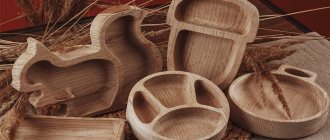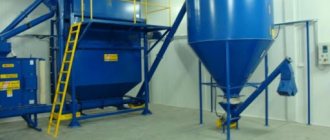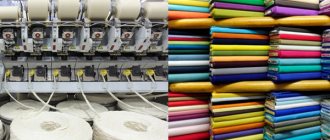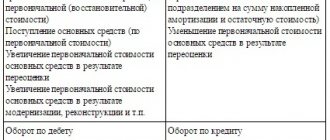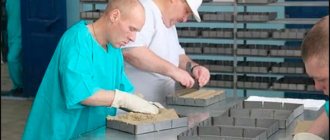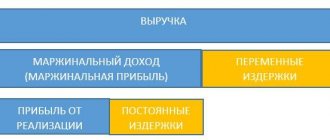In addition to loaves and loaves, pita breads occupy a separate niche on supermarket shelves. These products are beginning to be in increasing demand. The popularity of lavash is due to a number of reasons. Firstly, lavash is used in the preparation of many famous dishes (shawarma, casserole, appetizer, etc.), secondly, lavash, unlike bread, is considered a completely healthy product, since yeast is not used in its production. It is for these reasons that the high demand for pita bread continues throughout the year.
The lavash production business is considered profitable and profitable. But, as in any other production, a competent approach and clear planning are important here.
Sales of products
The first and main thing is sales. Before opening production, it is recommended to find the main ways to sell pita bread. And not as most beginners do - first they open production, launch a line and only then think about where to sell their products. This is not the right approach, and most often leads to the closure of a business. Therefore, it is important to know that our products will be sold and will not remain in stock.
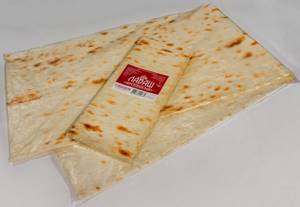
There are several ways to sell the produced lavash:
- Sales through our own sales points, for example near food markets. Mobile trade counters, kiosks and pavilions can be used for these purposes.
- Sales through supply to existing small retail outlets, bakeries, confectioneries, cafes, restaurants and other fast food outlets.
- Selling lavash through supply contracts to local and federal retail chains is the most profitable, and at the same time the most difficult sales option. Getting into a retail chain means finding a large sales market, but in most cases, such products are already present on supermarket shelves and pushing a competitor forward is practically impossible without appropriate kickbacks.
How to make pita bread in a frying pan?
Heat a frying pan with a diameter of about 25 cm over high heat.

Note!
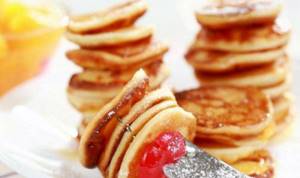
How to make pancakes - tips on how to quickly and easily prepare delicious pancakes with your own hands (85 photos + video lesson)

How to make frosting at home: making frosting at home. 105 photos of how to make delicious glaze

How to make vinegar at home: step-by-step description of making vinegar with your own hands (150 photos)
Reduce heat to medium. Without using butter, bake the rolled out cakes on both sides until golden brown. Make sure that the layers do not dry out or crack.

Place the finished products on a damp towel and leave until completely cool.
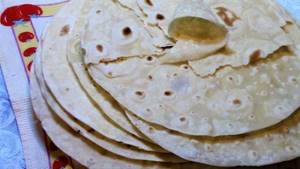
Cooled products will become soft and elastic. Place them in a bag and put them in the refrigerator.
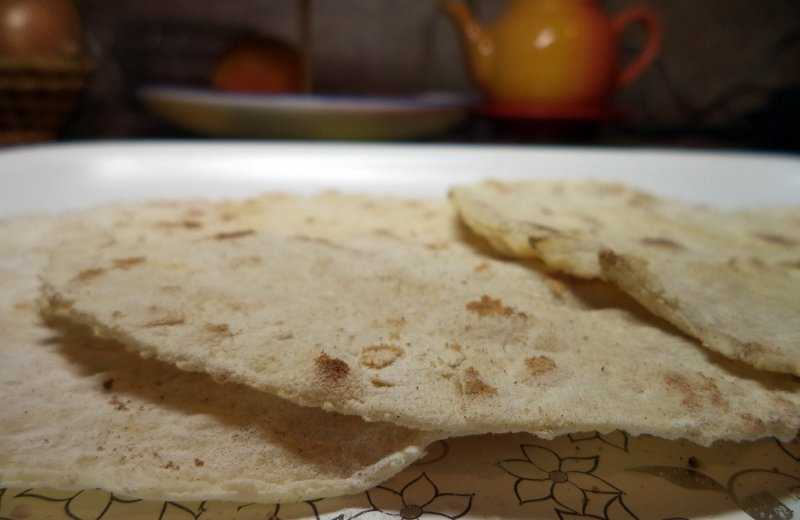
What equipment to choose for the production of pita bread
The main cost item is the purchase of equipment. The equipment configuration depends on the chosen production format: manual or automated. An automatic production line will cost from 2.5 million rubles, plus delivery and installation of equipment. A dough mixer can be purchased separately, costing from 70 thousand rubles. This is the most expensive, but at the same time the most effective option for starting a business.
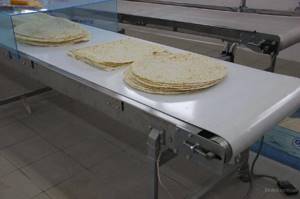
A less expensive way is to purchase equipment in separate configurations. In this case, you will need to buy: an oven - from 50 thousand rubles, a dough mixer (from 25 liters) - from 70 thousand rubles, a dough sheeter - from 180 thousand rubles, a production table - from 15 thousand rubles. and auxiliary equipment - from 50 thousand rubles. Buying used equipment can save up to 40% of initial costs.
A certain amount (from 50 thousand rubles) will be required to purchase raw materials and ingredients for making lavash. Experts do not recommend saving on ingredients, as this may affect the quality of the products produced. This mainly applies to flour, its grade and quality.
A separate cost item will be the renovation of the premises and the installation of communications (if there are none). This stage will require investments in the region of 200-500 thousand rubles.
Let’s not forget about the reserve fund, which includes 150–300 thousand rubles for all kinds of unforeseen expenses.
Equipment
Traditionally, all types of pita bread are prepared by hand. To build a business selling flatbreads, you will have to abandon most of the manual labor in favor of mechanical devices or an automatic line - this will reduce the wage bill for employees and increase production volumes.
The automatic line includes:
- sheeting machine;
- tunnel oven;
- humidifier.
In addition to the line, you will need a dough mixer, which will cost from 40 to 380 thousand rubles, depending on the volume and power.
If you purchase mechanical installations, you can purchase a dough sheeter for 82-300 thousand rubles, and a tunnel oven for 70 to 950 thousand rubles.
The estimated price for an automated line will range from 500 thousand rubles to 2.7 million rubles. Such a large difference in cost is justified by the performance of the equipment, the set of functions, as well as its manufacturer.
Lavash production technology
The process of making pita bread is relatively simple. If manual equipment is used, the sequence of operations is as follows. First of all, knead the dough in a dough mixer for 30 minutes. Next, the kneaded dough is divided into pieces of 140 grams each. Each piece is covered with cellophane to prevent drying and weathering. Then each piece is rolled out into a flat cake with a thickness of 5-6 mm and a diameter of 250 mm using a rolling machine. The rolled out cakes are sprinkled with flour to prevent the dough from sticking together and are also covered with cellophane. Next, the flatbreads are stretched onto a matrix pillow and the lavash is baked.
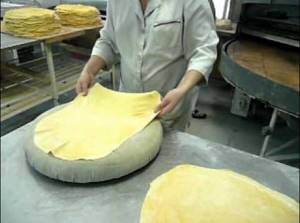
The use of an automated line can significantly increase the efficiency of lavash production. Such lines are very compact and do not take up much space. The line usually includes a sheeting machine, a conveyor-humidifier, a packaging table, a tunnel oven, a control panel and an exhaust system.
The use of automation allows us to produce the maximum amount of pita bread per shift (30-35 thousand pieces), while spending a minimum of human labor. To operate one such line, only 2 people are enough. Hence, the wage fund is lower and, accordingly, the cost of finished products is lower.
Equipment for the production of lavash
To prepare traditional Armenian lavash, a tandoor is usually used, and yet many businessmen who start production choose automated modern compact lines instead. Admirers of the original lavash claim that the product made using modern equipment is significantly different in both consumer and taste parameters from lavash cooked in a tandoor. And yet, there is no doubt that the first method is more profitable from an economic point of view. According to entrepreneurs, the selling price of baking lavash using automatic equipment will be at least 1.5-2 times lower.
Through the use of automated lines, it is possible to produce about tens of thousands of flatbreads per day. Typically, such production lines include a tunnel oven, a sheeting machine, a conveyor-humidifier, a control panel, a couple of packaging and storage tables, exhaust pipes and umbrellas.
The automated line is particularly compact; it does not take up too much space, and it requires a couple of workers to operate it.
And yet, automated lines have their opponents. They are confident that during the preparation of lavash it is unacceptable to miss manually stretching the lavash blank onto the matrix. And if you don’t do this, the quality characteristics of the final product will deteriorate. In addition, they vehemently protest against the use of gas ovens for the production of lavash, since the product prepared in this way, in their opinion, acquires the aroma of gas. Opponents of automation prefer the use of standard equipment for baking flour products; this includes an oven for baking pita bread, a machine for rolling out dough, a dough mixing machine, and a vibrating flour sifter.
If you bet on automated production, then the line will cost from $40,000 (excluding the price of delivery and installation work), and the dough mixer from $400 to approximately $3,000).
If you purchase each equipment separately, then a sheeting machine will cost $3,000, a dough mixer with a capacity of at least 25 liters will cost $1,500-2,000, and an oven will cost from $1,000.
If you purchase used equipment, you can save about 35-40% of the cost (based on the condition of the equipment). At the beginning of work, it is permissible to do without a sheeting machine and roll out the dough manually. And yet, in this case, productivity will be minimal, and therefore it is best to buy auxiliary equipment over time. Initially, you should buy one unit of each type of equipment, and then, as production volumes and income increase, you can purchase additional equipment.
About $1000 will be spent on purchasing the first batch of raw materials needed to prepare Armenian lavash. There are no special requirements for raw materials, so there should not be any particular difficulties in finding suppliers. Try to find options for economical and high-quality raw materials, as well as ideal working conditions for you. Despite the fact that suppliers of automated equipment are convinced that for the production of products on this type of production line, the most important thing is to maintain the necessary proportions of salt, water and flour, while the quality and grade of flour do not play a special role, and yet experts advise not to save too much on key ingredients.
When ordering an automated line, certain suppliers offer their customers ready-made label designs, as well as a certain number of packaging bags for pita bread (for example, 20,000 units). If your supplier does not offer such bonuses, or if you order all the equipment separately, this means that you will have to order the packaging yourself. The price of cellophane packaging with a label is less than 1 rub. for a unit. Still, it’s worth considering the design of your label first. Initially, it seems that this is not so important, that it is a trifle that is not worth special attention. And yet, according to research results, in the absence of other options for promoting finished products, only a bright label that stands out against the overall background initially attracts the attention of buyers to a new product.
Permission to start production
The main condition for locating production is that the premises must meet a number of requirements from the SES. So, in accordance with the law:
- The bakery cannot be placed in basements or semi-basements;
- ceilings and walls must be whitewashed, walls tiled to a height of 1.75 m;
- the room must be supplied with cold and hot water and sewerage;
- premises must be equipped with both natural and artificial ventilation;
- In addition to the main production premises, the following are needed: utility and utility rooms, a flour warehouse, a raw material warehouse, a wardrobe, a shower room, a toilet, and a sink.
Which tax system to choose
As a taxation system, the ideal option is to use a simplified taxation system, 6% of revenue or 15% of profit. The simplified tax system will relieve a start-up bakery from paying VAT, income tax and property tax, and will also significantly simplify accounting.
The permitting documents will require a notification from Rospotrebnadzor (SES) about the start of activities and a declaration of conformity for the products manufactured. The floor plan for production must be coordinated with the State Fire Supervision Authority and Rostechnadzor. It is also necessary to conclude a number of agreements with third-party organizations for the removal of garbage and solid waste (with housing and communal services) and the disposal of mercury-containing lamps. It may take several months to complete all the paperwork.
Recruitment
To organize production, you will need to employ at least 5 people: two workers for preparing and baking lavash, two workers for packaging finished products and one technologist. But this is only at the initial stage, when some of the functions can be performed personally by the project manager. Ideally, in addition to production personnel, you will need to hire a driver for delivering lavash, a sales manager, and several support workers. Accountants and cleaners can be hired under outsourcing agreements.
All production personnel are required to have medical records, since the work is related to food production.
Packaging material
You should definitely consider the issue of packaging material. If you purchase automated equipment, suppliers can additionally offer you ready-made label designs and packaging for pita bread. If suppliers do not offer any bonuses, then you will have to purchase packaging yourself. It is not recommended to save on this cost item, since packaging is the face of the product. Be sure to think about its design. The cost of one package with a sticker will cost no more than 1 ruble per piece.
Workshop technical equipment
It doesn’t matter what technology is chosen to implement the project, the entrepreneur will in any case have to buy equipment for the production of lavash. The only difference is that the purchased line will differ in configuration and, accordingly, in its price.
The automatic lavash production line is equipped with the following machines:
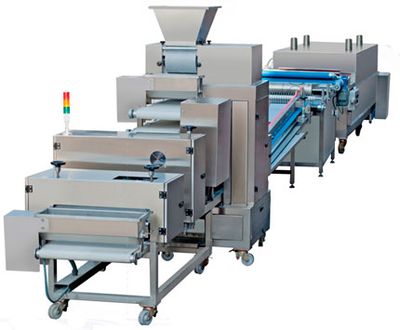
Automatic line for the production of lavash
- dough mixing machine,
- Extruder.
- Automatic machine for thin dough rolling.
- Automatic machine for stretching dough.
- Tunnel oven.
- Cooling conveyor.
- Packing machine.
The entire process is automated, and therefore, to control the line, the presence of no more than 3 people per shift will be required in the workshop. To equip the production of thin pita bread in this way, an investment of at least 2,500,000 rubles will be required, which will be a literally unaffordable amount for many entrepreneurs.
But to equip a workshop for the production of lavash using traditional technology, it involves the use of the following machines and devices:
- Vibrating sifter.
- Dough mixer.
- Tandoor.
- Rolling machines.
- Tables.
- Sinks.
In this case, an expensive tunnel oven for lavash is not required, and to start a mini-enterprise you will have to invest ≈1,000,000 rubles. And it’s quite possible to reduce capital costs if you buy used equipment.
Step-by-step plan for opening a lavash production business
- Market analysis.
- Purchasing or renting premises: to install an automated line you need from 120 sq. m, when installing separate equipment, the workshop area is from 30 sq. m. m.
- Obtaining permits from the SES, product certificates.
- Coordination of production with Rospotrebnadzor and fire inspection.
- Registration of activities in the tax service.
- Purchase of equipment, installation, launch of production.
- Conducting an advertising campaign, organizing sales.
How much can you earn from your activity?
Business valuation:
- Initial investment – 1.5 million rubles.
- Market saturation with products is low.
- Difficulty of starting an activity – 6/10.
With full sales of products, earnings range from 100 thousand rubles. per month. Business payback is 5-7 months. You can increase your income by launching the production of products similar to Armenian lavash - flatbreads from different cuisines of the world. Simple calculations show that with proper business organization, profitability is about 100%: the cost of 1 pita bread is 6 rubles, in supermarkets and stores the cost of products varies from 10 to 15 rubles.
Profitability of the planned business
The price of equipment for the production of lavash will begin to pay off only when constant sales of the produced products are established. And newcomers will have a hard time here, even despite the lack of competitors.
Wholesale sales of lavash can be carried out to large chain stores or grocery warehouses. And the first option will not be available to a novice entrepreneur at first, since federal chains impose strict requirements on all those who want to place their goods on their shelves. And while such contacts have not been established, it is worth starting active cooperation with small private stores. There is another option - to supply lavash to cafes and restaurants. Surely in every city there are many catering establishments that use purchased lavash for preparing dishes, and not a home-made product.
The specific timing of reaching the break-even point will depend on the investments made and sales volumes. To buy a lavash oven and set up a small bakery, you will need approximately 1,500,000 rubles. To launch a fully automated workshop, you will need at least 3,000,000 rubles. The high profitability of the planned business can be easily proven with numbers. On the wholesale market, thin pita bread costs 8-15 rubles/piece. Its cost is 3-10 rubles/piece. If the product is fully sold, the price of the furnace will pay off very quickly.
